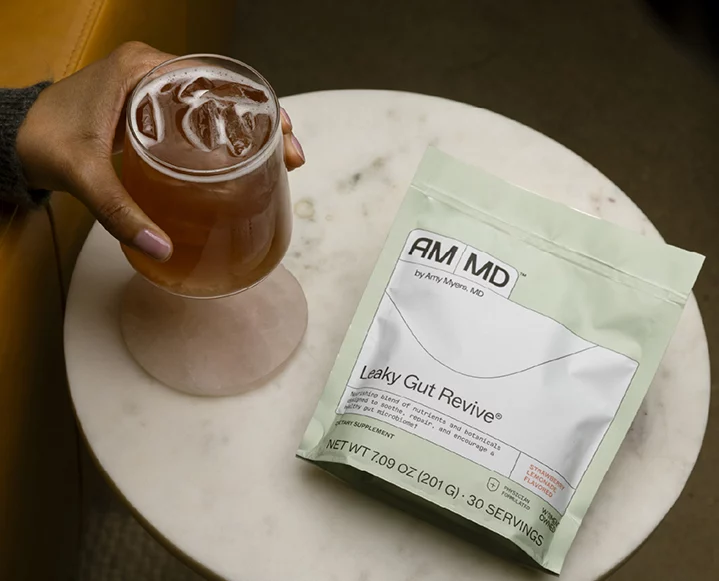Judging by the jugs of homemade kombucha and hoards of lacto-fermented foods in Phoebe Lapine’s fridge, you might never guess that this food blogger and private chef was once reluctant to embrace wellness as we know it.
After being diagnosed with an autoimmune disorder in her twenties, Phoebe went searching for a way to feel better naturally — but didn’t want to give up on less kale-centric personal pleasures. Her new book, The Wellness Project, chronicles her year long self-experiment with finding that liveable balance, which she refers to as “healthy hedonism”. Catchy.
Phoebe’s down to earth perspective and craveably clean recipes illustrate a flavor of living well we can all relate to — a sense of healthful balance that’s brought to life in her fridge full of diverse, nutrient whole food ingredients, like so many other wellness pros we love. Take a tour…
Food philosophy in one sentence:
Healthy hedonism! It’s all about balancing the things that nourish your body with the things that feed your spirit.
Always in my fridge:
Since I started cooking as a means to heal my autoimmune disease, a huge percentage of my fridge territory has been occupied by lacto-fermented foods. They have practically taken over a whole shelf! On hand, there’s usually a few different types of pickled veggies — kimchi, curry kraut, beets. These are very different than the shelf-stable pickles you’ll find in the condiment aisle. In order for your gut to benefit from the active cultures, these fermented foods can’t be pasteurized and must be kept refrigerated in order to survive. Other varieties: Coconut yogurt, Icelandic skyr (which I find easier to digest than other non-fermented cow’s milk dairy), chickpea miso and kvass.
About nine months ago, I also started making my own homemade kombucha, so there are usually a few growlers worth of various flavors!
In case you were wondering, gut/microbiome imbalances are often times the root cause of autoimmune disease, since 70 percent of your immune system lives in your intestinal tract. If you want to heal or prevent AI issues, nurturing your resident bacteria and re-training your immune system to know friend from foe with these fermented foods is so worth the investment. I also have a few probiotics in pill form, which also live in my fridge, but you get more diversity by eating bacteria-rich foods like those mentioned above.
7 recipe staples always on hand:
Eggs. Salad greens, especially kale and arugula. Garlic, ginger and sweet potatoes in a bowl on the counter. Spices galore. Lemons.
Must-have munchies:
I’m big into energy bites, the artist formally known as vegan truffles. There’s a bomb recipe for gingerbread cookie beauty balls in my book, The Wellness Project, that’s been on repeat in my kitchen. They keep for a few weeks in the fridge and, given the number of them I’ve eaten recently, I am confident saying you will never get sick of them.
Fave condiments:
I have ten different types of mustard in my fridge right now. My current obsession is this small-batch maker out of Asheville: Lusty Monk. It’s spicy in a way that you usually only find in Europe. Plus it gets its name because mustard was thought to be an aphrodisiac and therefore, monks were forbidden from eating it in Medieval times. Please pass the mustard… I’ve also never met a mayo that I didn’t like, but prefer to either buy organic canola, veganaise, or make my own flavored aiolis from scratch. Other favorites: tahini, harissa, curry pastes.
Ingredient that makes everything taste better:
Fresh lemon juice + zest.
Go-to proteins:
Eggs, lentils, free-range chicken, grass-fed beef and shellfish.
Best bargain:
Homemade veggie stock made from your scraps! I always use a compost bowl on the counter when I’m prepping and save onion skins, herb stems, carrot peelings, fennel fronds and the like. I add them to a freezer bag throughout the month and then make a huge batch of stock to then freeze. Creating something for free that I might have otherwise bought!
Best label-reading tip:
Learn the 50+ words for sugar and recognize them. For any packaged food, err on the side of simplicity — the fewest ingredients possible. But even some healthy, simple packaged brands have three or more types of added sugar in them. The fact that 80 percent of the supermarket aisle has added sugar should be reason enough to start reading labels. If you can eliminate the mindless sugar, there’s more room in your diet for sweet treats that actually feel special. Plus, when your blood sugar isn’t going berserk all the time, your liver can focus on much more important tasks, like clearing unwanted chemicals and antibodies from your bloodstream.
Fave veggie + what you make with it:
I’m on a real golden beet kick. I love mixing them with saffron or turmeric — anything in the golden family of hues — and braising them with lemon juice and white wine like in this recipe.
Must-have pantry staples:
My spice rack. It’s one of the best places you can put your money in terms of creating flavorful meals out of humble ingredients. Suddenly, one cup of lentils can become five different dishes. Spices also have amazing medicinal powers. You can slowly build your collection up over time, but many will lose their punch and efficacy after a year or two. Other favorites: nut milks, various gluten-free flours and grains, chia and hemp seeds, all the nuts.
Craziest thing I buy:
Kvass. It’s the fermented veggie juice from beets and packs a huge probiotic punch. I like taking swigs of it daily, especially then I’m running low on kombucha and can’t drink a whole glass of it. Farmhouse Cultures makes great gut shots in different flavors. If you’re gluten-free make sure to seek out kvass made from beets and not rye bread, which is also traditional in Eastern Europe.
Sweets and other indulgences:
I usually stock a few different types of dark chocolate. The Hu Kitchen bar with quinoa puffs is my new addiction.
Dairy or non-dairy faves:
Almond and coconut milk. Coconut yogurt.
Skip labels that read:
All-natural. Completely unregulated. For eggs and poultry, “no hormones added” basically just means the producer is following the law. “Vegetarian diet” also doesn’t mean that they’re being fed in a natural outdoor habitat — chicken eat worms! For eggs in particular, this video is super helpful. http://www.getwellbe.com/
Favorite splurge:
Anita’s coconut yogurt. It’s definitely much more expensive than regular yogurt but I haven’t gotten around to learning how to make my own. I don’t eat enough yogurt to warrant that!
For last minute entertaining:
I usually have a few avocados around for guac! Or at least improv minimalist gauc: mashed avocado with fresh lemon juice, garlic and a dash of cumin.
Favorite places to shop:
Kalustyan’s is a spice and condiment mecca. The Meat Hook has amazing sustainable animal proteins, as does my local grocer Foragers NYC. And, of course, the Union Square Greenmarket!
Simple go-to recipe:
Vietnamese catfish with dill-turmeric sauce. When I’m going for simple, seafood is one of the easiest things to throw together quickly. People are so intimidated by cooking fish, but if you roast it in the oven it’s pretty hard to screw up, and your home smells less, um, fishy. This recipe is so interesting because it uses turmeric as the base — an amazing anti-inflammatory ingredient — and is packed with fresh herbs. You can serve it on a bed of greens, as a lettuce wrap, or with rice or kelp noodles. https://feedmephoebe.com/vietnamese-fish-with-turmeric-dill-sauce/
Best food memory:
The time Ina Garten taught me how to make German chocolate cake.











